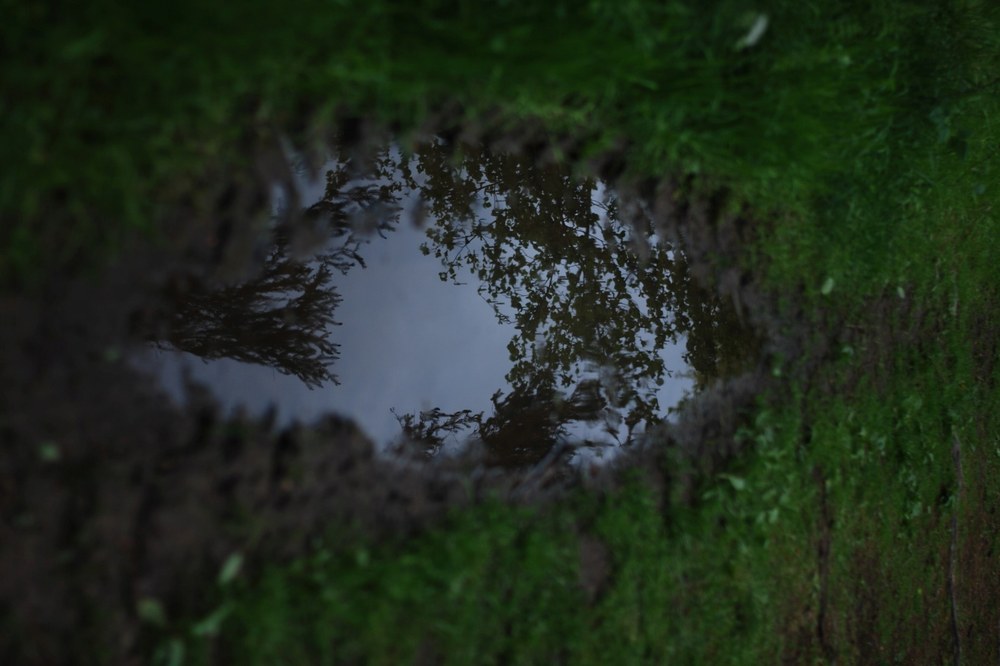Vernal pools are temporary or ephemeral ponds in forests or fields. They vary in size from one square meter to over two acres in size.

Photo credit: Pat Moin on Unsplash
Spring is in the air! I am looking forward to spring awakenings. One of my favorite sounds of spring is the high-pitched, rhythmic calls of spring peepers. These tiny tree frogs are often heard but can be quite challenging to find in the spring woods. Once while exploring a vernal pool, my son was determined to catch a noisy spring peeper. After many failed attempts and after darkness fell, he successfully captured one in his small hands. We marveled at the small frog for a few seconds before returning it to its unique dwelling. This spring peeper was not the only creature observed that night but likely, was the most intriguing. Like spring peepers, many amphibians, invertebrates, and other animals can be found in these unique wetland habitats.
Vernal pools are temporary or ephemeral ponds in forests or fields. They vary in size from one square meter to over two acres in size. They may be isolated, connected to larger wetlands, or located in floodplains along rivers. These seasonal ponds form from high groundwater or from rain and snowmelt in late fall, winter, and early spring. They are often dry by summer's end. There are no inlets or outflows of water from the pools. Because vernal pools are seasonal and are not wet all year, they are not inhabited by fish. This greatly decreases the chance of predation for many eggs and developing larvae. Fish would have a feast in these seasonal wetlands!
During early spring nights, frogs and salamanders will begin migrating from their upland dwellings to vernal pools where they will breed and lay eggs. This spring migration is fascinating to witness. However, if you trek out to see this natural phenomenon, please minimize disturbance. It's important that the migrants safely reach their breeding grounds. As spring progresses, it is fun to revisit vernal pools to observe the jelly-like masses of frog eggs, twisting, coiled toad eggs, countless aquatic insects, wriggling tadpoles, and more. You may even catch a glimpse of an elusive, rare salamander.
According to the Western Pennsylvania Conservancy, there are six amphibians and two crustaceans that use vernal pools almost exclusively for breeding and larval development in Pennsylvania. They are called indicator species, meaning they would not survive in other wetland environments. Indicator species in PA are as follows: marbled salamander, spotted salamander, Jefferson salamander, blue-spotted salamander, wood frog, Eastern spadefoot, fairy shrimp, clam shrimp, Euroamerican clam shrimp and diversity clam shrimp.
Other wildlife species, referred to as facultative species, may use vernal pools for breeding and development but do not need them for survival. They can survive and reproduce in other wetland habitats too. Facultative species include the northern spring peeper, red spotted newt, American toad, wood turtle, and spotted turtle. In addition, many other animals such as herons, egrets, ducks, racoons, predatory insects, deer, bats, etc. will visit vernal pools to drink, hunt, or forage. These extraordinary wetlands are essential to so many creatures.
Wildlife inhabiting vernal pools has adapted in extraordinary ways. They are adapted to both aquatic and terrestrial habitats at their different life stages. Needs and adaptations vary by species. In spring, many amphibians migrate to vernal pools to breed and deposit eggs. Many go back to the vernal pool where they hatched and continue to go back year after year. Amazing! Sometimes they have to crossroads and other obstacles to reach their "home" pool, so it can be quite challenging! After hatching, tadpoles and larvae develop rapidly and will leave the pool before it dries. Some will move on to upland habitats; others will move to streams or ponds. Some larvae and adults survive the dry season in the soil or under leaves in the pool basin.
Some spend the dry season as eggs, larvae, or cysts and will hatch and grow when the pools re-flood with water. For instance, fairy shrimp are crustaceans that live in vernal pools. Adults only live one season. However, cysts (resting eggs) may survive through dry periods or winter freezes and may even survive decades or centuries before hatching. Incredible adaptation! As you can see, vernal pools are teeming with a diversity of specialized creatures.
Threats
Vernal pools are valuable ecosystems that need to be saved. Their largest threat is development. Development can cause immediate loss of habitat and can destroy the rare species found there. Some vernal pools may not meet the state criteria of a wetland and are sometimes overlooked because they can be dry for several months. Other threats include climate change, pollution, invasive species, mosquito control, and lack of knowledge about them.
Protection
These unique habitats must be protected by landowners. It is important to protect the habitat around vernal pools to protect wildlife during all stages. What can you do to protect them?
- Do not drain or alter the vernal pool and carefully manage the area around it.
- Minimize the use of fertilizers, pesticides, and other chemicals that could travel to the vernal pool via runoff.
- Do not disturb the vernal pool in either the wet or dry season. Vegetation, fallen leaves, and woody debris are all important components of a healthy vernal pool and should not be disturbed.
- Protect the tree canopy so vernal pools remain shaded.
- Do not introduce or remove plants or animals.
- Document their locations using the Pennsylvania Vernal Pool Registry
It's a citizen-based program and is a rather simple process. The information in the database will be available to researchers, landowners, and agencies managing these unique habitats.
If you happen to stumble across a large "puddle" while hiking or biking in the spring woods, it may not be a "puddle" at all. Chances are, it may be an inconspicuous, yet critical wetland habitat - a vernal pool worth protecting!

